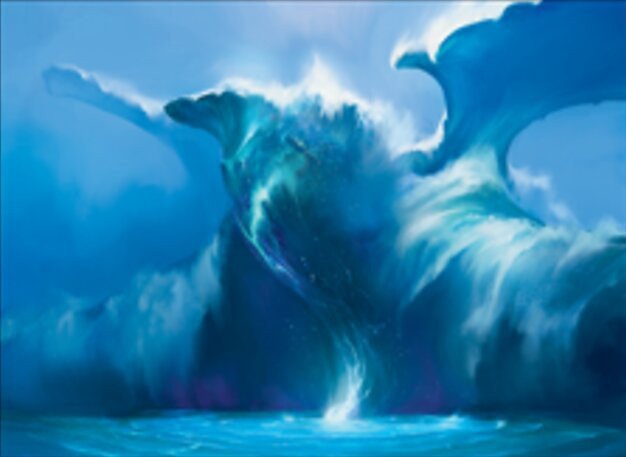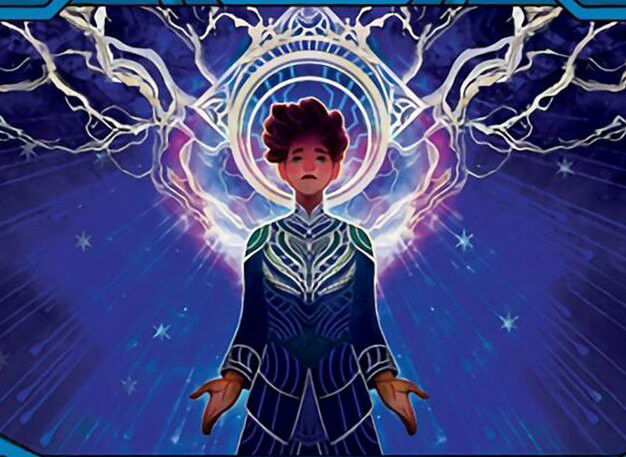Hello players! Let me introduce myself first! My name is Antonio Carlos Faillace, born in Niterói/RJ and currently living in Brasília/DF. I've been playing Magic since 1995 (I started with Ice Age), and I'm honored to be a Judge since 2009.
Within the Magic judges program, I have been a “level 2” judge since 2014, a result of better knowledge of the rules and participation in more competitive tournaments. I've even had the opportunity to work in several national circuits and also to work in several Magic Fest / Grand Prix around the world.
Ad
Today, I will take advantage of the imminent arrival of the new set, Modern Horizons 2, to talk about some interesting rules that involve the new cards.
The objective here is not to analyze the feasibility/playability of the cards in the formats, but to talk about interactions and doubts that often arise, especially when dealing with rules that are not so intuitive.

Let's start with an interaction that makes use of good sequencing/order of abilites in the stack.
The Pauper players are probably more into it, as Mulldrifter and Ephemerate are old friends of the format. But now, with an entire cycle of creatures with the Evoke ability that doesn't even cost mana to cast, we'll probably have a lot of that interaction in Modern as well.
Basically, when you cast a creature for the evoke cost, when it enters the battlefield the ability will trigger and go on the stack telling you to sacrifice it. Normally, these creatures also have abilities of their own when they enter the battlefield, so we have TWO abilities that go on the stack. And here's the secret: whoever chooses the order in which they will happen is who controls the abilities, that is: the very person who cast them.
It turns out that if you “blink” the creature before it is sacrificed by Evoke (using a card like Ephemerate, Cloudshift, etc.), when the creature reenters the battlefield it will no longer be “evoked”, and so it will stay on the board. The original ability in Evoke only refers to the creature when it first entered, and so it won't affect the “new” creature on the battlefield. And yes, you'll also gain one more instance of the creature's own ability for entering the battlefield.
But what difference can it make?
Look, it could be a lot. Let's say you want to cast Grief and use Ephemerate, but you don't know whether the opponent has some sort of removal in response. You can cast Grief, choose to resolve the look at opponent's hand first, and discard a card (meanwhile, the Evoke ability is on the stack, waiting for their turn). After you've looked at the hand and confirmed that there's nothing for you to worry about (or, if you do, you've probably taken that card from your opponent), then yes, still responding to the Evoke on the stack, you cast your Ephemerate and "blink" the Grief, taking another card from the opponent and keeping a 3/2 on the board!

Here's a card that caused a lot of “upset” when it was first spoiled, especially since it was one of the first cards shown in the set. If it wasn't enough that it's both an enchantment AND a land (for example, things that target enchantments, like Naturalize, will interact with Urza’s Saga), the card still touches on a recent change in rules terminology. But let's go by parts!
First, let's remember that playing Urza's Saga DOES NOT use the stack (after all, it's a land), DOESN'T increase your storm count (after all, it's a land) and does count YES as your turn land drop (after all, it's a… ah, you got it). Note that the first chapter of the Saga doesn't last until the end of the turn, that is, Urza’s Saga will keep the ability to add a colorless mana throughout the turns.
Ad
An interesting interaction is Urza's Saga with Blood Moon.
By the current rules, when a Blood Moon enters the board, any “Urza's Saga's” on the table will briefly become Land-Mountain Enchantment… and for losing chapter abilities, are put into the Graveyard as a State-Based Effect .
Similarly, if Blood Moon is already on the board and someone plays Urza’s Saga, immediately the Saga will go to the Graveyard.
And finally, let's talk about chapter III of the Saga, which has caused some confusion.
Recently, there has been a change in the nomenclature of "converted mana cost" to "mana value". However, Urza’s Saga DOES NOT interact with the mana value of the card in its third chapter, but with the mana COST. That is, chapter III will allow you to fetch cards like Mishra's Bauble or Pithing Needle, but will NOT allow you to fetch cards like artifact lands, Walking Ballista, Lotus Bloom and the like.
In summary: the card must have the cost 0 or 1 printed on it.

And to close today's article, let's go with a “easier” one: have you ever noticed that Sea Drake's ability uses the word “target”?
Unlike some cards, such as Kor Skyfisher, when Sea Drake enters the field you MUST point out which 2 lands you will return to your hand.
This allows for a few tricks, for example: you can target two of your fetchlands, and in response to its ability crack them to fetch.
Since the ability was targeting the fetchland that is no longer on the board, nothing will happen, so you end up bypassing what would be Sea Drake's “drawback” and keep your lands!
Conclusion
We just started to explore the new set, but don't worry! Next week we will have more interactions and interesting rules from other cards. And if you have any nice interactions or questions about the Modern Horizons 2 cards, leave them in the comments, so I can answer.
Thanks for reading!








— Comments0
Be the first to comment